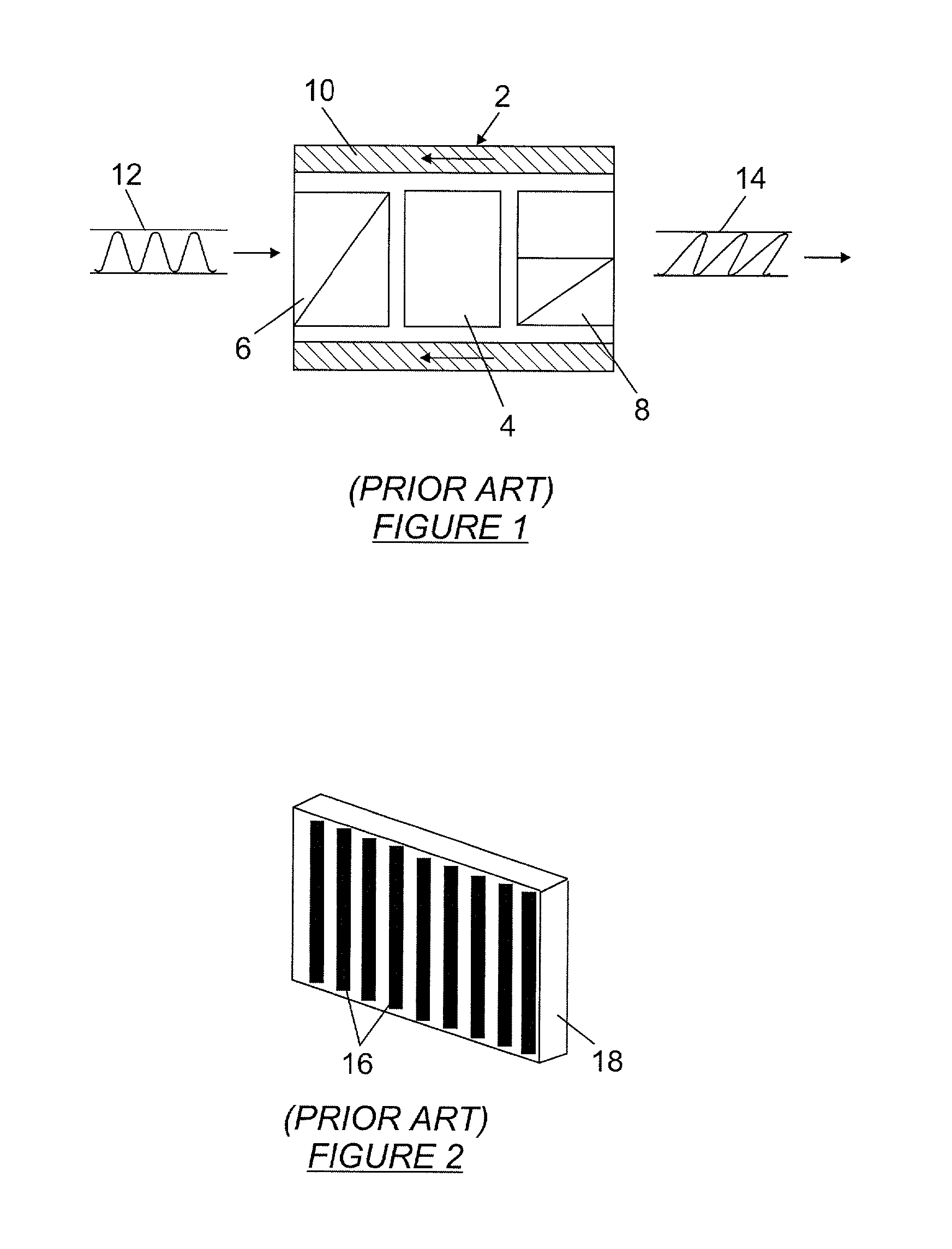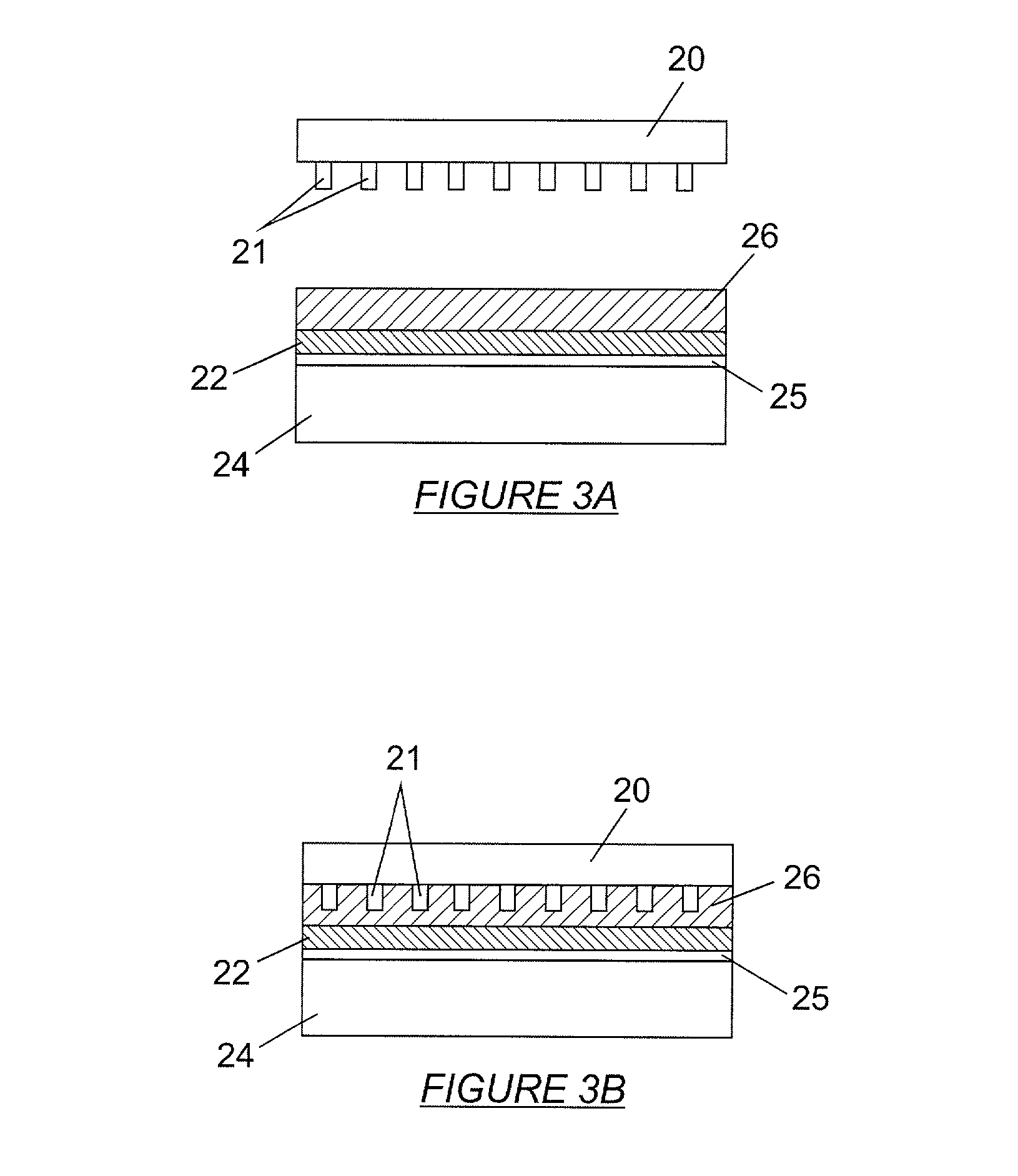Method for fabricating an integrated optical isolator and a novel wire grid structure
a technology of optical isolators and wire grids, which is applied in the direction of polarising elements, instruments, other domestic objects, etc., can solve the problems of reliability problems, back reflection affects the operation of laser diodes, and the assembly process of optical isolators 2 is somewhat labor-intensive, so as to suppress the reflection of rejected polarization and low cost, the effect of sacrificing performan
- Summary
- Abstract
- Description
- Claims
- Application Information
AI Technical Summary
Benefits of technology
Problems solved by technology
Method used
Image
Examples
example 2
[0031] In this example, aluminum is sputtered on a glass substrate. The thickness of the aluminum film is approximately 590 nm. Diluted PMMA is then spin coated on the aluminum layer on the glass substrate. The thickness of the PMMA is approximately 690 nm. A mold with a grid pattern having a grid period of 570 nm and a depth of 690 nm and the PMMA-coated substrate are heated to 110.degree. C. It takes approximately 3 minutes to stabilize the temperature of the mold and substrate. The mold and PMMA-coated substrate are then compressed together with a pressure of 67 MPa. The mold and the PMMA-coated substrate are maintained at this contacting pressure for 1 minute and then cooled for 4 minutes. After cooling, the mold is removed from the PMMA. A change in the color of the embossed PMMA with changes in viewing angle indicates that the grid pattern has been made on the PMMA. The embossed PMMA and the underlying aluminum layer are dry-etched by BCl.sub.3 / Cl.sub.2N.sub.2 gas flow for 120...
example 3
[0039] This example assumes that the bottom layer 44 is made of aluminum, the middle layer 48 is made of silica, and the top layer 46 is made of gold. The grid dimensions are as follows: thickness of the bottom aluminum layer 44 is 466 mn, thickness of the top gold layer 46 is 47 nm, thickness of the middle silica layer 48 is 527 nm, and width of the each grid element 52 is 210 nm. The aspect ratio is 5, the grid period is 396 nm, and the duty cycle is 0.53. The transmission is 85.2% and the contrast ratio is 52.4 dB.
example 4
[0040] This example assumes that the bottom layer 44 is made of gold, the middle layer 48 is made of silicon, and the top layer 46 is made of aluminum. The grid dimensions are as follows: thickness of the bottom gold layer 44 is 412 mn, thickness of the top aluminum layer 46 is 16 mn, thickness of the middle silicon layer 48 is 211 nm, and width of each grid element 52 is 147 nm. The aspect ratio is 4.3, the grid period is 334 nm, and the duty cycle is 0.44. The transmission is 90.9% and the contrast ratio is 40.2 dB.
PUM
| Property | Measurement | Unit |
|---|---|---|
| width | aaaaa | aaaaa |
| thickness | aaaaa | aaaaa |
| thickness | aaaaa | aaaaa |
Abstract
Description
Claims
Application Information
 Login to View More
Login to View More - R&D
- Intellectual Property
- Life Sciences
- Materials
- Tech Scout
- Unparalleled Data Quality
- Higher Quality Content
- 60% Fewer Hallucinations
Browse by: Latest US Patents, China's latest patents, Technical Efficacy Thesaurus, Application Domain, Technology Topic, Popular Technical Reports.
© 2025 PatSnap. All rights reserved.Legal|Privacy policy|Modern Slavery Act Transparency Statement|Sitemap|About US| Contact US: help@patsnap.com



